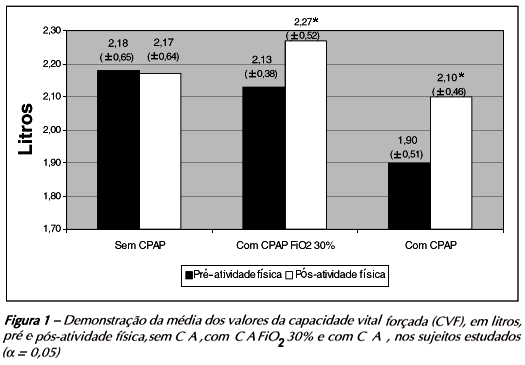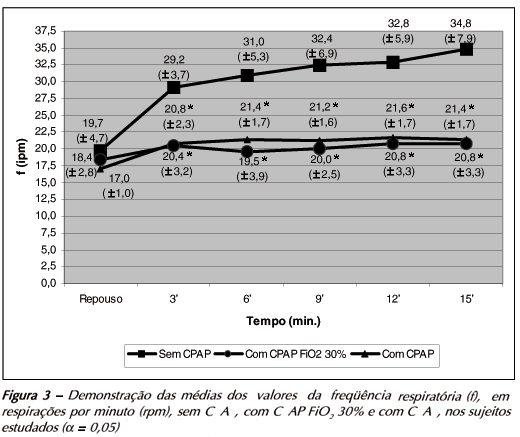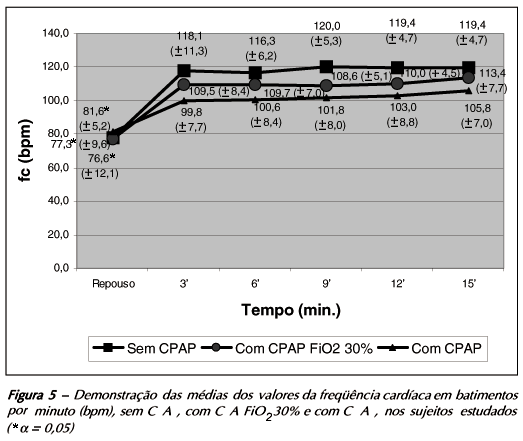Objective: To analyze the effects of the continuous positive airway pressure (CPAP), with 30% of FiO2 and in compressed air, used during the performance of submaximal physical activity on an ergometric treadmill. Materials and methods: Nine male individuals with COPD were submitted to physical activity on the ergometric treadmill using CPAP with 30% FiO2 .The authors evaluated the behavior of the spirometric parameters, the forced vital capacity (FVC), the forced expiratory volume in the first second (FEV1) before and after physical activity, the respiratory frequency (f), the arterial oxygen saturation (SaO2), the cardiac frequency (cf), the systolic arterial pressure (SAP), and the diastolic arterial pressure (DAP) at rest and during physical activity. Results and conclusion: Results have shown that, when using CPAP in both situations analyzed, there has been an increase in the FVC and a decrease in f and in cf with statistically significant difference (alpha = 0.05). SaO2 has showned a significantly higher mean when CPAP was used with 30% of FiO2 (alpha = 0.05). The FEV1, the SAP and DAP have maintained the same value in the statistical analyses.
Exercise test; Forced expiratory volume; Vital capacity; Spirometry; Heart rate; Obstructive lung diseases; Positive-pressure respiration





